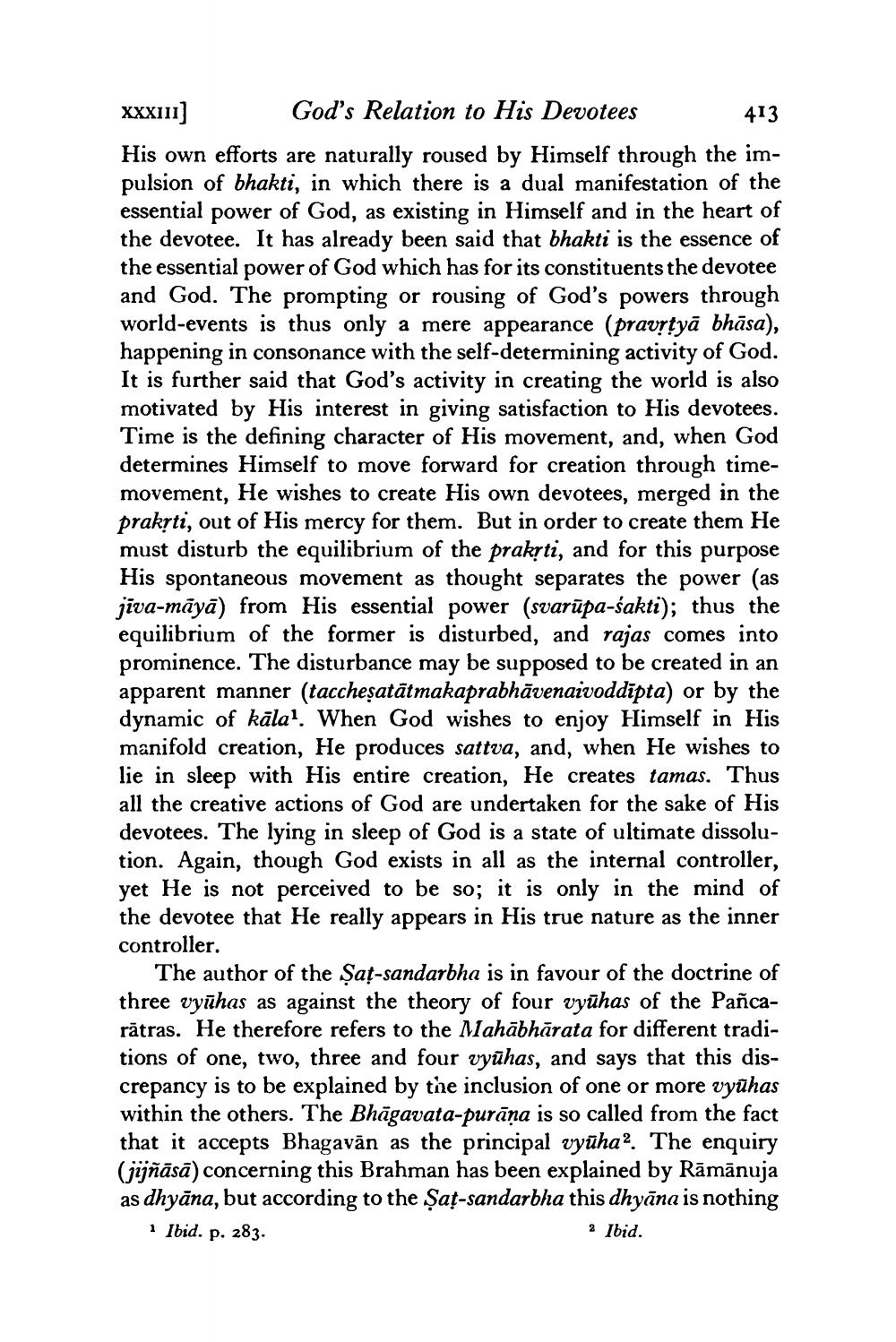________________
XXX111] God's Relation to His Devotees
413 His own efforts are naturally roused by Himself through the impulsion of bhakti, in which there is a dual manifestation of the essential power of God, as existing in Himself and in the heart of the devotee. It has already been said that bhakti is the essence of the essential power of God which has for its constituents the devotee and God. The prompting or rousing of God's powers through world-events is thus only a mere appearance (pravityā bhāsa), happening in consonance with the self-determining activity of God. It is further said that God's activity in creating the world is also motivated by His interest in giving satisfaction to His devotees. Time is the defining character of His movement, and, when God determines Himself to move forward for creation through timemovement, He wishes to create His own devotees, merged in the prakrti, out of His mercy for them. But in order to create them He must disturb the equilibrium of the prakyti, and for this purpose His spontaneous movement as thought separates the power (as jiva-māyā) from His essential power (svarūpa-sakti); thus the equilibrium of the former is disturbed, and rajas comes into prominence. The disturbance may be supposed to be created in an apparent manner (taccheşatātmakaprabhāvenaivoddīpta) or by the dynamic of kāla'. When God wishes to enjoy Himself in His manifold creation, He produces sattva, and, when He wishes to lie in sleep with His entire creation, He creates tamas. Thus all the creative actions of God are undertaken for the sake of His devotees. The lying in sleep of God is a state of ultimate dissolution. Again, though God exists in all as the internal controller, yet He is not perceived to be so; it is only in the mind of the devotee that He really appears in His true nature as the inner controller.
The author of the Şat-sandarbha is in favour of the doctrine of three vyūhas as against the theory of four vyūhas of the Pañcarātras. He therefore refers to the Mahābhārata for different traditions of one, two, three and four vyūhas, and says that this discrepancy is to be explained by the inclusion of one or more vyūhas within the others. The Bhāgavata-purāņa is so called from the fact that it accepts Bhagavān as the principal vyūhaThe enquiry (jijñāsā) concerning this Brahman has been explained by Rāmānuja as dhyāna, but according to the Șat-sandarbha this dhyāna is nothing 1 Ibid. p. 283.
a Ibid.




